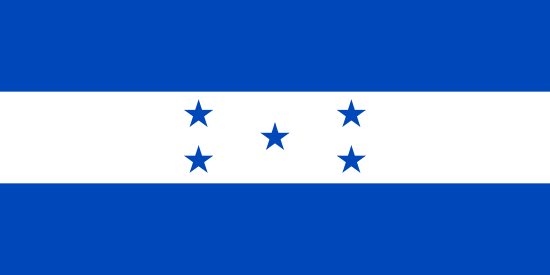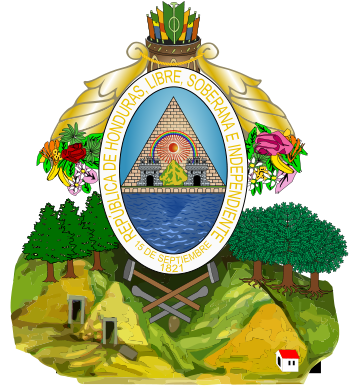Honduras is located in Central America and borders Guatemala, El Salvador and Nicaragua. Before Honduras became independent in 1821, the country was a Spanish colony.
| Capital: | Tegucigalpa |
| Biggest city: | Tegucigalpa |
| State: | republic |
| Language: | Spanish |
| Religion: | catholicism |
| Surface: | 112,090 km |
| Population: | 8.6 million (2013) |
| Population density: | 70 inhabitants per km² |
| Expectancy: | 70 years |
| Illiteracy: | 20% |
| Currency: | lempira (HNL) 1 lempira = 0.36 kr |
| Time difference: | -7 hours |
| Electricity: | 110/220 V AC 60Hz |
| National Day: | September 15 |
| Country area code: | 504 |
| 2-Letter country abbreviation: | HN (See more abbreviations on Abbreviationfinder) |
| Business: | agriculture 60%, service sector 24%, industry 16% |
| Climate: | tropical on the plains, cooler in the mountainous regions |

Honduras was ruled by the military from the mid-1950s until 1982, when free, democratic elections were held. In 1969, the so-called football war against neighboring El Salvador is fought for 4 days. In the 1980s, Honduras was the base for contras fought against the Nicaraguan government. Honduras was at the same time allied with Salvadoran government troops fighting left-wing guerrillas in El Salvador.
Honduras is one of the poorest countries in the Western Hemisphere, with an extremely unequal distribution of income between those who earn the most and those who earn the least. Half of the population lives below the poverty line.
There are hopes that the country will have part of its foreign debt written off. How Honduras’ economy will develop depends a lot on the US economy, as the US is the country’s largest trading partner, but also on the world market price of coffee and the fact that it succeeds in reducing the extensive crime and corruption in the country.
WORLD HERITAGE
The following objects in Honduras are on the UNESCO World Heritage List.
The year in which the item was added to the list is indicated in parentheses.
- Ruins of Copan (1980)
- Río Plátanos Biosphere Reserve (1982)
ELECTRICAL OUTLET
Electricity and electrical outlets in Honduras
Voltage: 110 V
Frequency: 60 Hz
Type of plug: A, B
Need an adapter: Yes, you need an adapter.
CLIMATE AND WEATHER
Weather in Tegucigalpa
| Climate | Jan | Feb | Mar | Apr | May | Jun | Christmas | Aug | Sep | Oct | Nov | Dec |
| Average temperature ° C | 21 | 22 | 23 | 25 | 25 | 24 | 24 | 24 | 24 | 23 | 22 | 21 |
| Day ° C | 27 | 28 | 30 | 31 | 31 | 29 | 29 | 29 | 29 | 28 | 27 | 27 |
| Night ° C | 15 | 15 | 16 | 18 | 19 | 19 | 18 | 18 | 18 | 17 | 16 | 15 |
| Rain (mm) | 10 | 10 | 10 | 20 | 100 | 110 | 60 | 100 | 120 | 110 | 80 | 30 |
| Rainy days | 10 | 5 | 5 | 6 | 13 | 18 | 18 | 17 | 19 | 18 | 12 | 8 |
| Soltim / day | 7 | 7 | 8 | 8 | 6 | 4 | 4 | 5 | 4 | 4 | 5 | 7 |

Tegucigalpa
According to Countryaah, Tegucigalpa is the capital of Honduras and is located 100 km from the Pacific coast. The city has 894,000 inhabitants (2006) and just over 1.3 million with suburbs. Tegucigalpa is the political and cultural center of Honduras and has an 18th-century national university and cathedral.
The city was founded in 1578 as the central town for the area’s mining, and was a center for gold and silver mining. The name means Silverberget. Nowadays, textiles, sugar and cigarettes are mainly produced in the city.